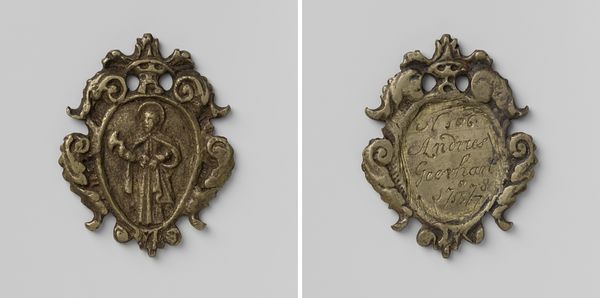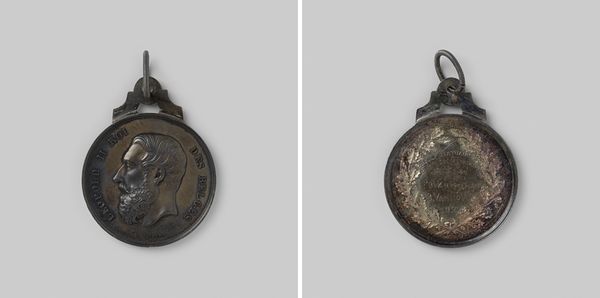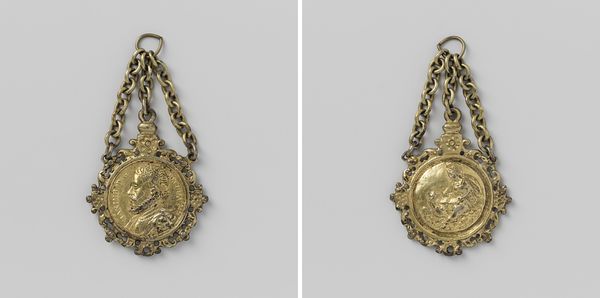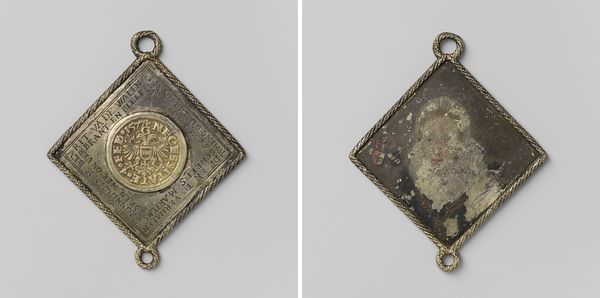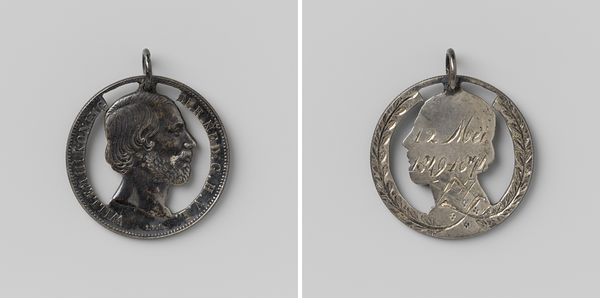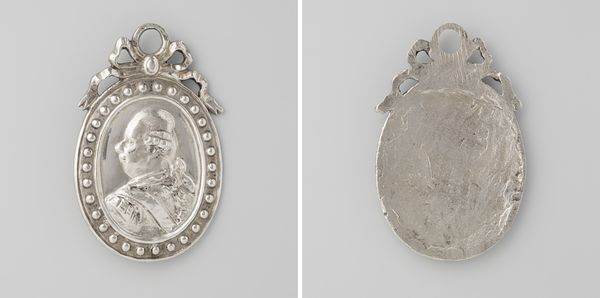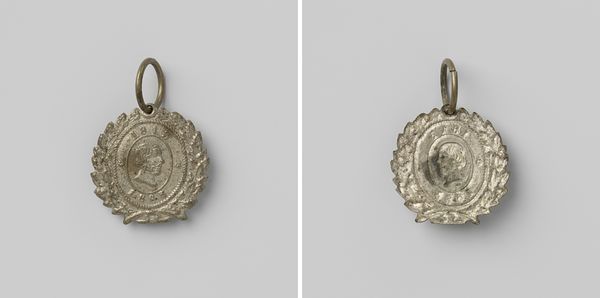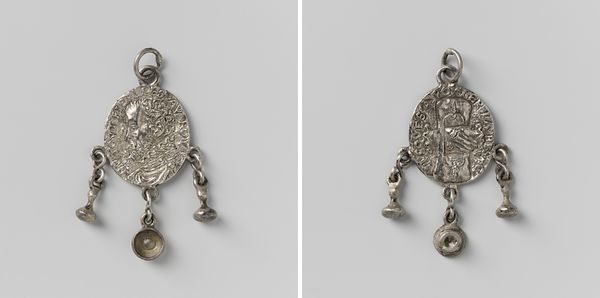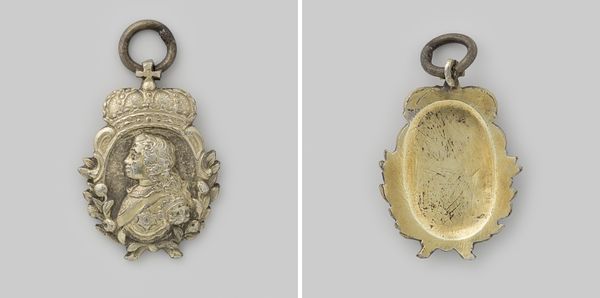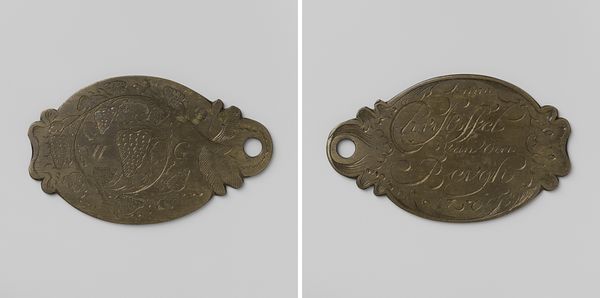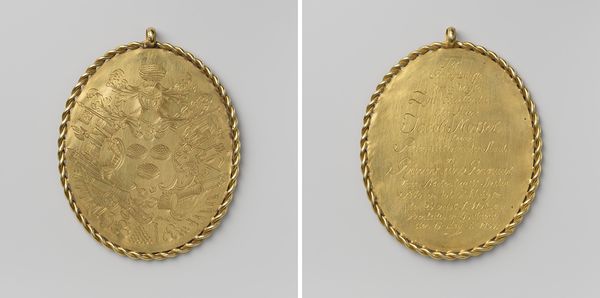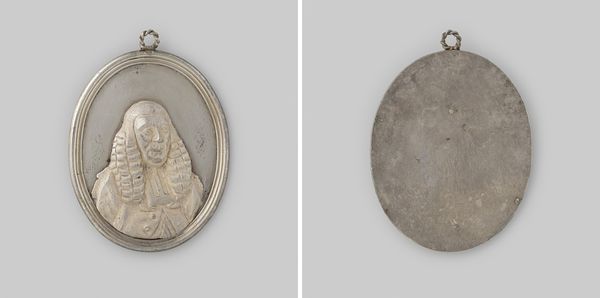
Dimensions: height 3.4 cm, width 3 cm, weight 6.24 gr
Copyright: Rijks Museum: Open Domain
Curator: This is the "Algemene Nederlandse Wielrijders Bond, 1883," created anonymously. It’s an assemblage incorporating metal, sculpture, prints and relief elements and currently resides in the Rijksmuseum. Editor: It seems like a small badge or medallion, perhaps for a cycling club. It has a sort of antique feel. What's particularly interesting is the layered effect – the metalwork around the central emblem. How do you interpret this work? Curator: The assemblage serves as a window into the late 19th century. Think about the rise of leisure activities, specifically cycling, amongst a growing middle class. This wasn’t just about recreation; it was about mobility, freedom, and challenging social norms. The medal form also references Neoclassicism. How might these aesthetics promote certain ideas about society, such as athleticism, patriotism, and a unified Dutch identity? Editor: That's a great point. It suggests that cycling was seen as something more than just a hobby. It ties into national identity and perhaps even a sense of progress. The Neoclassical laurel wreath feels like it is borrowing the symbolism of state medals or heraldry. Do you see the "wheel" having other potential symbolic meaning in relation to ideas of progress and the "modern age?" Curator: Exactly. Wheels can be understood as symbols of industry, machinery, forward motion, and all hallmarks of the industrialized modern age. Its accessibility challenged older models of transport like horsemanship. Consider the cultural shift towards speed and individual expression that the bicycle facilitated. The medal encapsulates all of that. What have you learned in considering those aspects? Editor: That context transforms it from a simple badge into a symbol of societal change, technological advancement, and national identity, far beyond just cycling. Curator: Precisely, placing an object in its social framework enriches our understanding of its artistic purpose.
Comments
No comments
Be the first to comment and join the conversation on the ultimate creative platform.
